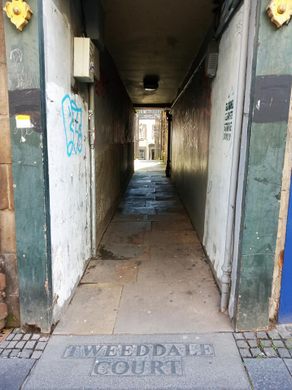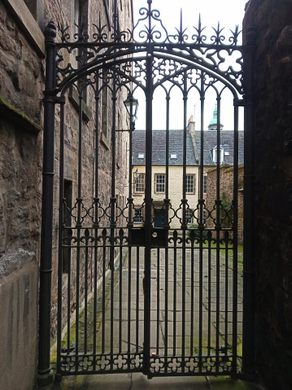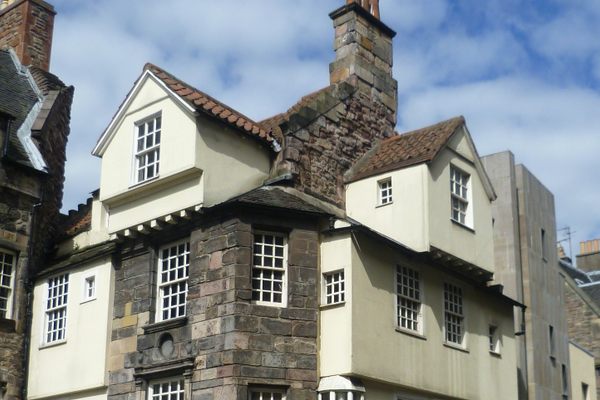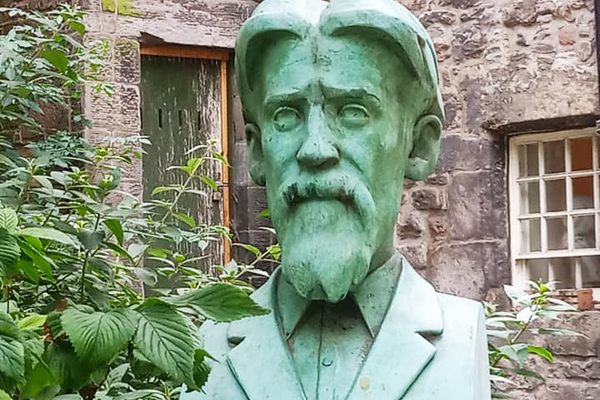Tweeddale Court
This 16th-century close preserves an unusual piece of Edinburgh's transportation history.
This old courtyard off Edinburgh’s Royal Mile houses a surprising architectural oddity.
Tweeddale Court dates from 1576. The property received its name from John 1st Marquess of Tweeddale, who acquired the townhouse in the 17th century. He, like those who dwelled there after him, changed the structure, adding to the building’s evolution.
Over time, the house fell into decay and disrepair as the Old Town’s wealthier residents relocated to the freshly constructed New Town. But despite these changes and its prolonged period of neglect, the building’s interior still houses one of the original 1576 doors.
The courtyard itself boasts an intriguing architectural feature, too. Take a good look at the old stone structure that juts from the western wall—a wall believed to be a surviving fragment of the King’s Wall, a protective 15th-century barrier that marked the city’s boundary. The top of the wall comes to a point, this was so soldiers could lean against it. There are also small indentations marking where rifles were placed. Edinburgh World Heritage lists this shed-like building as a Georgian era sedan chair house.
Besides the aforementioned attributes, there are several other building characteristics that mark the history of this location. There is a lamp post near the entrance to Tweedale house, this was one of the first gas fixtures to be introduced in Scotland. Looking up from here, notice the large crane like device. This was used to haul the large reams of paper to supply Edinburgh’s first printing press for Oliver & Boyd, whose names appear above the doorway.
The Royal Mile wasn’t always the vacation destination it is today. People crowded into the closely built houses, tossing their waste onto the narrow streets below. The area’s richer residents, rather than trudging through the sludge of sewage that languished in the streets, used sedan chairs to travel throughout the city
They’d climb into a tiny wooden compartment, held above the ground by two long poles. A pair or two of chairmen, often Highlanders, would either hoist the poles onto their shoulders or hold them in their hands and cart their wealthy passenger around town.
Sedan chairs were especially popular in Edinburgh in the 1700s—a small fleet had become available for public hire in the 1680s—but fell out of fashion by the mid-19th century. The Museum of Edinburgh, located down the road, has one on display.
Know Before You Go
You can walk into the court at any time.
































Follow us on Twitter to get the latest on the world's hidden wonders.
Like us on Facebook to get the latest on the world's hidden wonders.
Follow us on Twitter Like us on Facebook